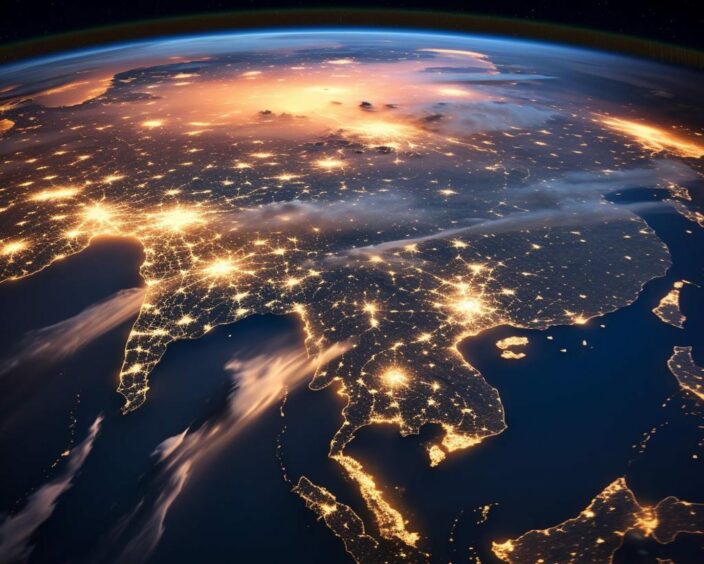
Oil and gas companies in the Asia-Pacific (APAC) region tend to be further behind their EU and US peers in terms of decarbonisation plans. They are increasingly feeling investor pressure to decarbonise, according to industry figures.
A study by the Institute for Energy Economics and Financial Analysis (IEEFA) found only 11 of the top 20 oil and gas producing companies in APAC had net zero targets. “Most” had not yet developed interim targets or detailed implementation plans.
All but one of the top 20 producing companies based in the EU have net zero targets. Four of these set interim 2030 targets. All of the top 20 oil and gas producing companies based in North America have net zero targets.
But oil and gas companies in Asia are starting to feel increasing pressure to set targets and decarbonise.
“Based on my observations and engagement with APAC financial institutions, both equity and debt holders of oil and gas companies are increasingly asking questions around decarbonisation plans,” said Christina Ng, one of the authors of the IEEFA report, ‘The Financing Landscape of APAC Oil and Gas Industry’.
“Stranded asset risk and the financial impacts of climate-related risks in the sector are well acknowledged within the region. Additionally, many institutions are committed to aligning their lending and investment portfolios with the Paris Agreement,” Ng added.
Under pressure
Firms in the APAC region are more reliant on equity than debt financing as a source of capital, IEEFA said. This means they may have felt less pressure to decarbonise than firms in other regions looking to raise debt finance from lenders.
Another likely factor is that states own many of the larger players in APAC. For these states, oil and gas contributes significantly to GDP, according to Ng.
However, the largest firms in the region have a combination of high outstanding borrowings and significant investment plans that may require them to establish more robust decarbonisation strategies to satisfy investors, the IEEFA report found.
Firms that fall into this category include China’s CNOOC, Petrochina and Sinopec, Australia’s Woodside and Santos and India’s Oil and Natural Gas Corp. (ONGC).
“As investment mandates become more emission-conscious, over time these six companies will progressively face a growing challenge in refinancing or gaining new bond financing for expansion,” says the IEEFA report.
A number of financial institutions in the EU and US have joined the Glasgow Financial Alliance for Net Zero (GFANZ). This is a group committed to phasing out fossil fuel financing. Members include BlackRock, HSBC and Natwest.
Although lenders and bond investors based in China and India – which account for around two-thirds of the debt capital used by the top 27 borrowers in the oil and gas sector – are not yet members of GFANZ, membership is likely to grow over the coming years.
“Some regional lenders such as DBS Bank and OCBC Bank already have policies in place to phase out financing in the oil and gas sector,” said Ng.
Dashes for gases
One strategy for firms in the EU and the US has been to slow oil investments and increase gas exploration. Gas can be used as a lower-carbon alternative to coal for power generation. This is also an option for APAC firms looking to decarbonise.
“Targets and regulatory pressures mean coal is likely to trend down [from 60-70%] to 40% in the APAC energy mix,” said Calvin Ho, partner at law firm Herbert Smith Freehills, speaking on a webinar organised by the firm. “A lot of regulatory push is towards gas being used as the bridge.”
The Gas Exporting Countries Forum (GECF) reports APAC gas demand at just over 900 billion cubic metres in 2021. It expects this to reach 1,600 bcm in 2050.
Another option is to invest in renewables, carbon capture and storage (CCS) and hydrogen. Feed-in tariffs (FiTs) and favourable regulatory environments have incentivised these investments in the EU and US.
Japan, China and South Korea have clean energy budgets that could help with deployment of these technologies. However, smaller nations such as Malaysia, Indonesia and Vietnam may need to find other ways to encourage rollout. Otherwise, they may need to wait until technology costs fall.
Lenders are likely to reward early movers, according to Hartley Clay, head of Asia Pacific Energy Investment Banking at Jefferies. Clay was speaking on the same webinar.
“There is going to be a need for big projects to be financed and banks are gearing up for that,” he said. “Energy poor economies should have a greater incentive to take leadership … whoever builds the first market and regulatory framework will set the template for the rest of the world.”
Recommended for you
